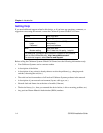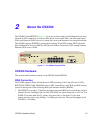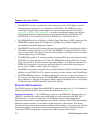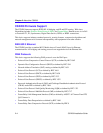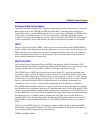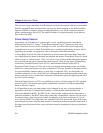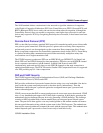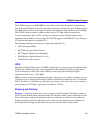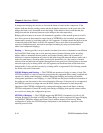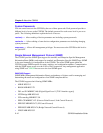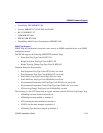
Chapter 2: About the CSX200
2-8 CSX200 Installation Guide
Full-duplex operation places an additional step to half-duplex operation that mirrors the operation
for a peer to validate the authenticator. The peer device challenges the authenticator by generating
a CHAP challenge, and the authenticator returns a CHAP response.
The peer device challenges the authenticator device by generating a CHAP challenge, and the
challenge contains your encrypted password and system name. The authenticator device then
applies a one-way hash algorithm to the random number and returns this encrypted information
along with the system name in the CHAP response. The peer device then runs the same algorithm
and compares the result with the expected value. This authentication method depends upon a
password or secret, known only to both ends locally.
LQM
Link Quality Monitoring (LQM) is a link control mechanism used with PPP to determine when,
and how often, a link is dropping data in units of packets and octets. Link Quality Monitoring
accomplishes this by providing Link-Quality-Reports to determine if the quality of the link is
adequate for operation. Link Quality Monitoring provides separate measurements for both
incoming and outgoing packets that are communicated to both ends of the link.
The PPP LQM mechanism carefully defines the Link-Quality-Report packet formats, and specifies
reference points for all data transmission and reception measurements. The LQM implementation
maintains successfully received packet and octet counts, and periodically transmits this
information to its peer using Link-Quality-Report packets.
Multilink Protocol
Multilink Protocol (MP) is an extension of PPP that controls the way frames are transferred across
several links whenever a single link is not sufficient to meet requirements of your present traffic
load. Multilink Protocol establishes several simultaneous links between two end points over
switched circuits (dial-up lines) in an ISDN network, and dynamically adjusts the bandwidth
demands between available links to maintain an effective data transfer.
ISDN
ISDN provides an inexpensive switched digital access to remote sites. The ISDN BRI (Basic Rate
Interface) standard provides for two high speed 64 Kbps bearer (B) channels used for voice or data
connections and one 16 Kbps signaling data (D) channel used for call setup, signaling, and other
information. ISDN allows all types of information to be transferred including voice, data, fax, and
video. Multiple devices can be linked to a single ISDN connection, each having their own
telephone number. Two or more channels can be combined into a single larger transmission pipe
offering variable transmission speeds.



